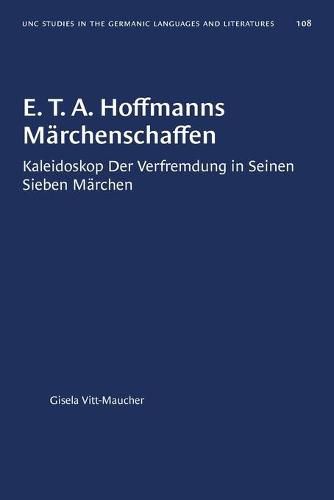Readings Newsletter
Become a Readings Member to make your shopping experience even easier.
Sign in or sign up for free!
You’re not far away from qualifying for FREE standard shipping within Australia
You’ve qualified for FREE standard shipping within Australia
The cart is loading…






This book provides a critical study of all seven of Hoffmann’s Kunstmarchen. Vitt-Maucher’s detailed individual analyses focus on Hoffmann’s use of structural, stylistic, and linguistic devices to create poetic deviations from the norms of reality. These deviations are diverse: distortions of language and time; altered dimensions of reality, persons, and objects; transformations and reversals of ‘normal’ conditions or conventions. They underlie Hoffmann’s often humorous or grotesque world of fairy tale magic and convey to the reader the poet’s intent.
In the course of his fairy tale production (1814-1821), Hoffmann’s use of language, imagery, and structure becomes increasingly distorted and alienated from everyday reality. Similarly, his employment of humor develops from early sociocritical, ironic, and parodistic intent to more autonomous and clearly less referential forms of ‘absolute humor.
$9.00 standard shipping within Australia
FREE standard shipping within Australia for orders over $100.00
Express & International shipping calculated at checkout
This book provides a critical study of all seven of Hoffmann’s Kunstmarchen. Vitt-Maucher’s detailed individual analyses focus on Hoffmann’s use of structural, stylistic, and linguistic devices to create poetic deviations from the norms of reality. These deviations are diverse: distortions of language and time; altered dimensions of reality, persons, and objects; transformations and reversals of ‘normal’ conditions or conventions. They underlie Hoffmann’s often humorous or grotesque world of fairy tale magic and convey to the reader the poet’s intent.
In the course of his fairy tale production (1814-1821), Hoffmann’s use of language, imagery, and structure becomes increasingly distorted and alienated from everyday reality. Similarly, his employment of humor develops from early sociocritical, ironic, and parodistic intent to more autonomous and clearly less referential forms of ‘absolute humor.